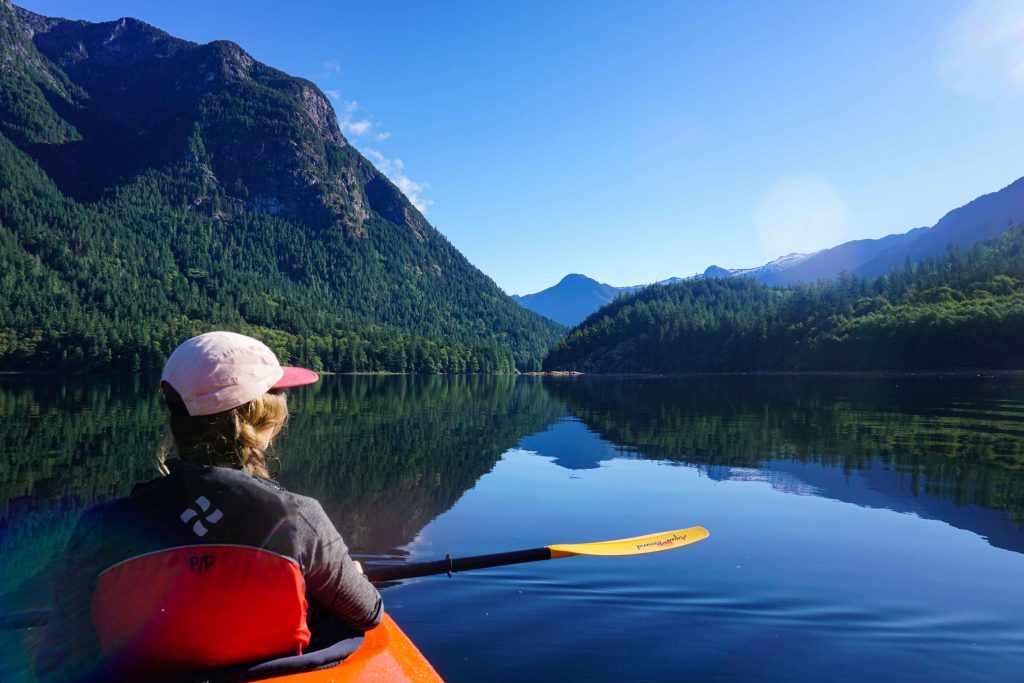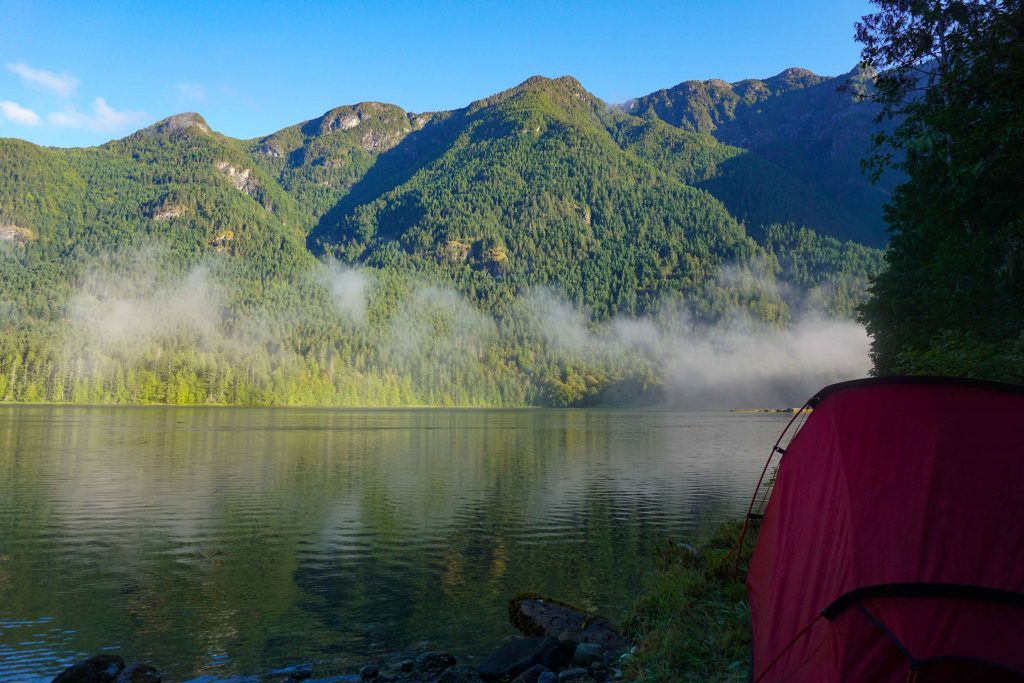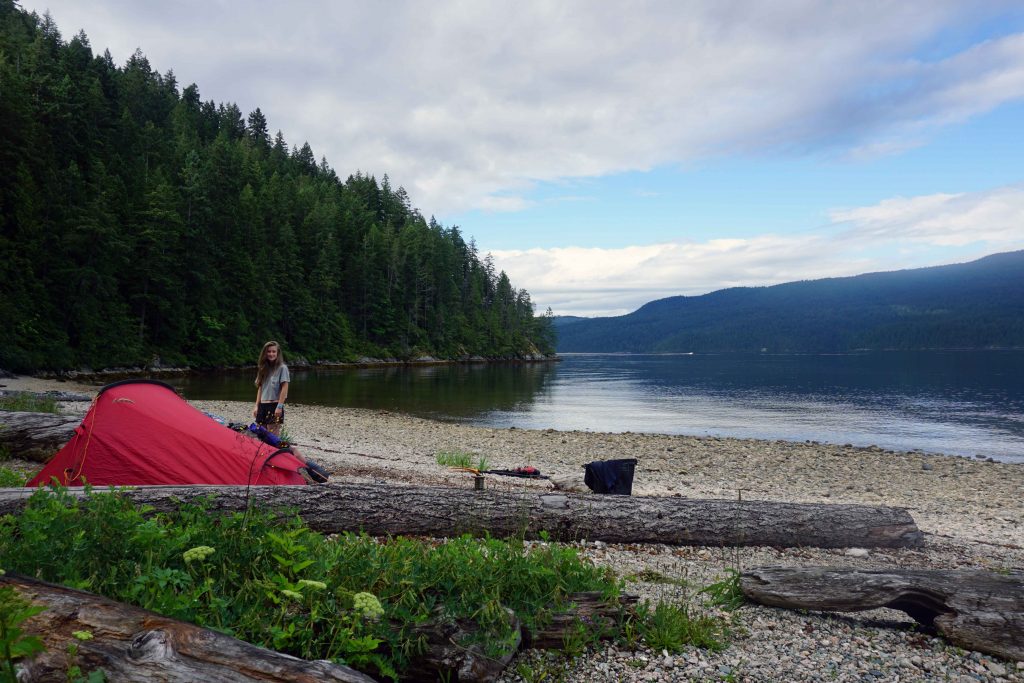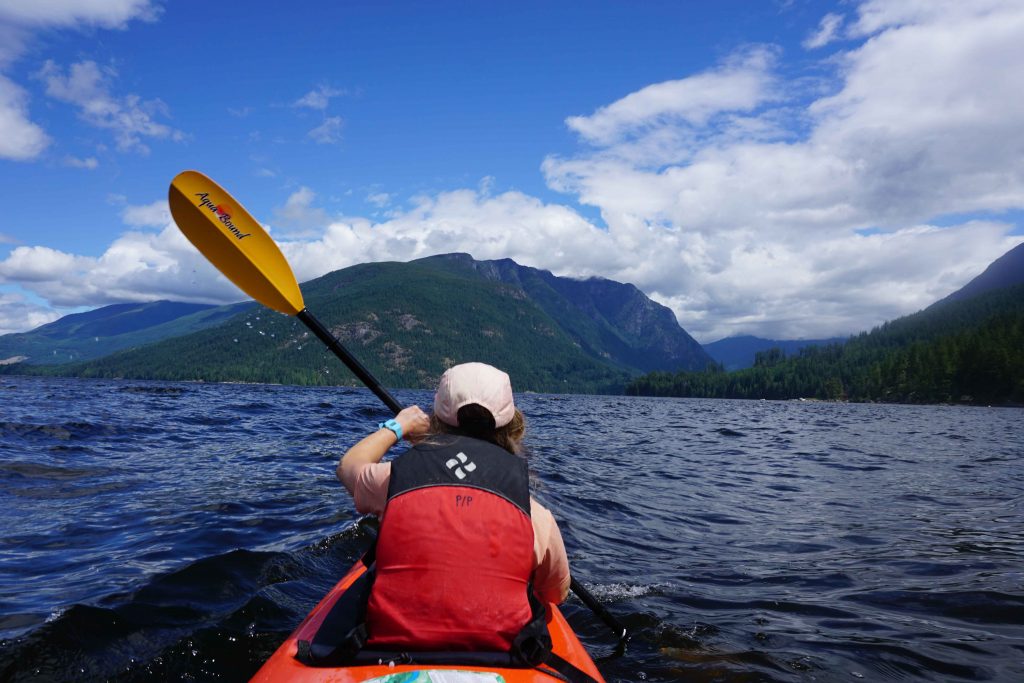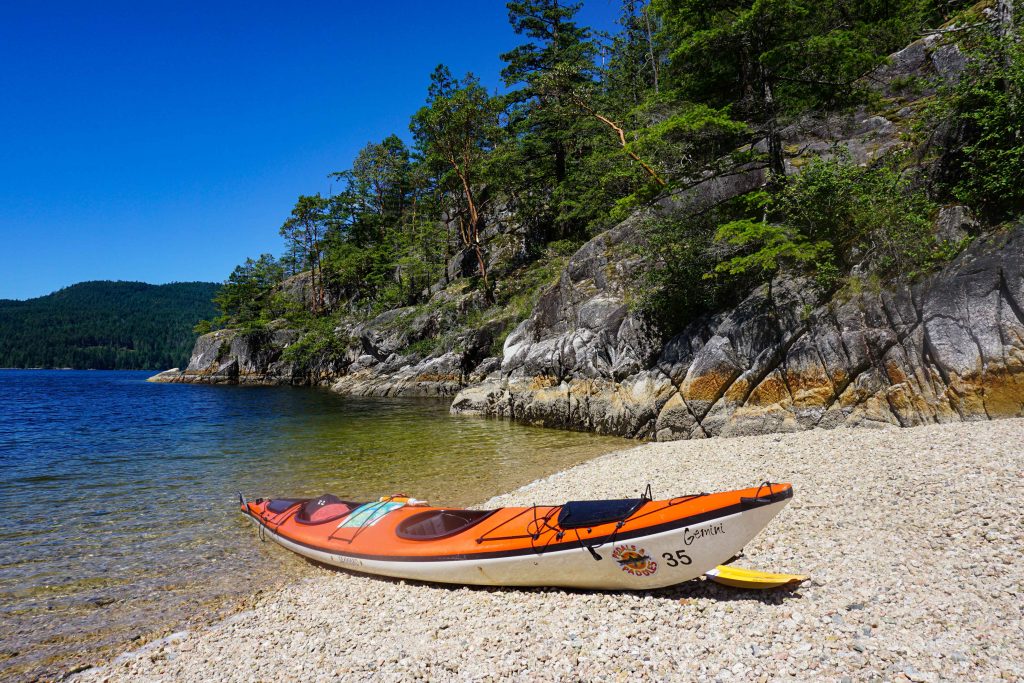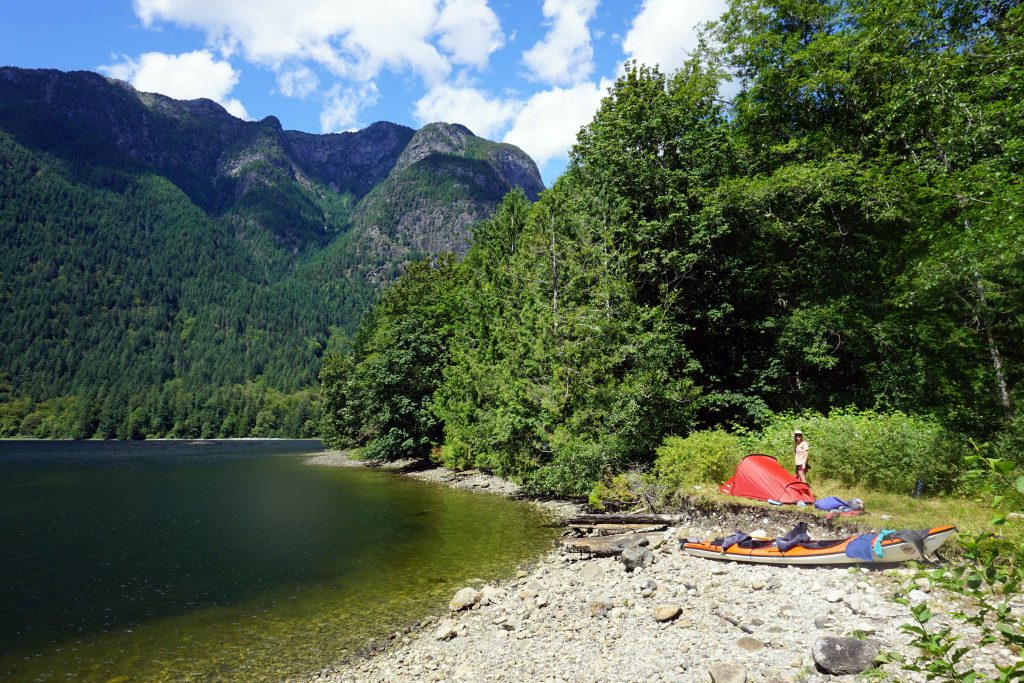Multi-day kayaking trips open up a new world of opportunities, allowing you to reach more remote locations – some of which may be marine access only. If you’re hoping to undertake an overnight kayak trip, but you’re not sure where to start, then this guide is for you.
Note: this blog deals with sea kayaking only. Kayaking on rivers, white water and other waterways is a little different.
Tip #1: Get a sea kayak
There are lots of different types of sea faring vessels out there. If you’re headed for saltwater, then the best option is a sit-in sea kayak, also known as a touring kayak or ocean kayak. You can get single, double and even triple seaters.
Tip #2: Plan a safe route
For your maiden voyage, choose a route with safe waters. Avoid large open water crossings and areas where winds are known to pick up, such as valleys. Start with one night at a time as you build your confidence, and only venture out in calm weather. Always leave a trip plan before you depart.
If you live near Vancouver, then kayaking the Indian Arm is a good beginner option, as is kayaking the Sechelt Inlet. Alternatively, you could hire a guide who will ensure your safety while you learn the ropes.
Tip #3: Know what to do in the event of a capsize
There is always the risk that your kayak will capsize. Be sure that you know what to do, should this happen. Some outfitters won’t actually allow you to rent a kayak, unless you can demonstrate a capsize situation and/or have a kayak training certificate.
Tip #4: Check the conditions and tide times
When you’re sea kayaking, you’re at the mercy of both the tide and the weather conditions. Both factors can have a significant impact on when you do (and do not) want to be out on the water. Check the tide times and conditions in advance, and plan your days around that information. Often, winds pick up in the afternoon, making the water much calmer in the mornings and evenings.
Tip #5: Pack like you would for a backcountry hiking trip
Sea kayaks usually have a hatch in the front and the back (or bow and stern, to use the proper terminology). Some double kayaks also have a hatch in the middle. When combined, these provide a surprising amount of storage space. Even so, it is better to pare back on non-essential items, as the extra weight will require extra effort when paddling. All kayaks also have a maximum carrying capacity which you don’t want to exceed.
Packing for a multi-day kayak trip requires exactly the same approach as packing for an overnight hike. Lightweight camping gear is ideal. The only exception to this rule is that you can carry more water while kayaking than while hiking.
A basic packing list might include:
- Tent
- Sleeping bag
- Sleeping mat
- Stove, fuel and lighter
- Cookware and utensils
- Water and food
- Water purification tablets
- Headlamp
- Multi-tool
- Toilet paper and trowel
- Sunscreen
- Spare set of clothes, including warm and waterproof clothes
- Satellite communication device
- First aid kit
The advantage of kayaking is that you can pack your kayak on the shore before launching. Any non-essential items that don’t fit in the kayak can be left behind (provided that doesn’t mean littering, of course!)
Tip #6: Use dry bags
Although the hatches on sea kayaks are usually sealed, they do get damp inside. Because of this, you should keep most of your gear in dry bags. This is particularly important for anything you really don’t want to get wet, like your clothes, sleeping bag and electronics.
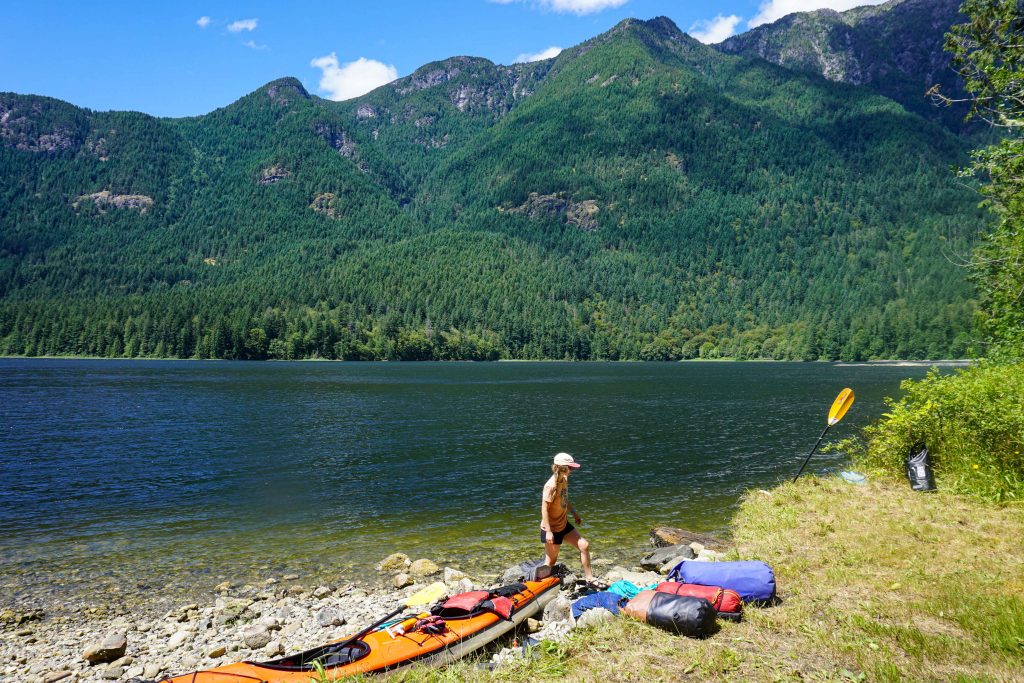
Tip #7: Float the kayak while you load/unload
It seems like an obvious thing to say, but an empty kayak is a lot lighter than a fully loaded kayak. With this in mind, it makes sense to float the kayak in the water, while you load and unload. This is easier than carrying a heavily laden kayak to the water’s edge. If there’s at least two of you, one person can hold the kayak while the other one packs.
Most sea kayaks are made from fiberglass, meaning you don’t want to drag them along the ground.
Tip #8: Think about weight distribution
The way in which you load a kayak can make a huge difference in terms of efficiency and manoeuvrability. Heavy items such as water should be stored low down and as centrally as possible (such as in the central hatch of a double kayak). For everything else, try to keep the weight distribution even between the bow/stern and port/starboard.
Also remember is that the first things into the kayak are the last to be unpacked. So, pack gear you’ll only need at camp in the farthest reaches of the bow/stern hatches. Anything you might need to access frequently should be packed last.
Tip #9: Pack a deck bag
It is very difficult to reach into the hatches while you’re paddling. Rather than risk a capsize, keep items such as snacks, a water bottle, sunscreen, sunglasses and camera close to hand. Some kayaks have a day hatch for this very purpose. If not, place them all in a small dry bag. This can be clipped onto the deck lines (which are elasticated lines in front of the cockpit).
Don’t store these items in the cockpit (where you sit) because if you capsize, they’ll be lost to the watery depths. It will also impede your ability to exit the kayak.
Tip #10: Carry and use safety equipment
You should always wear a life jacket while sea kayaking. Also carry a water bilge/bailer and sponge, spare paddle, whistle and throw rope. Keep a waterproof map of the area tucked under the deck lines.
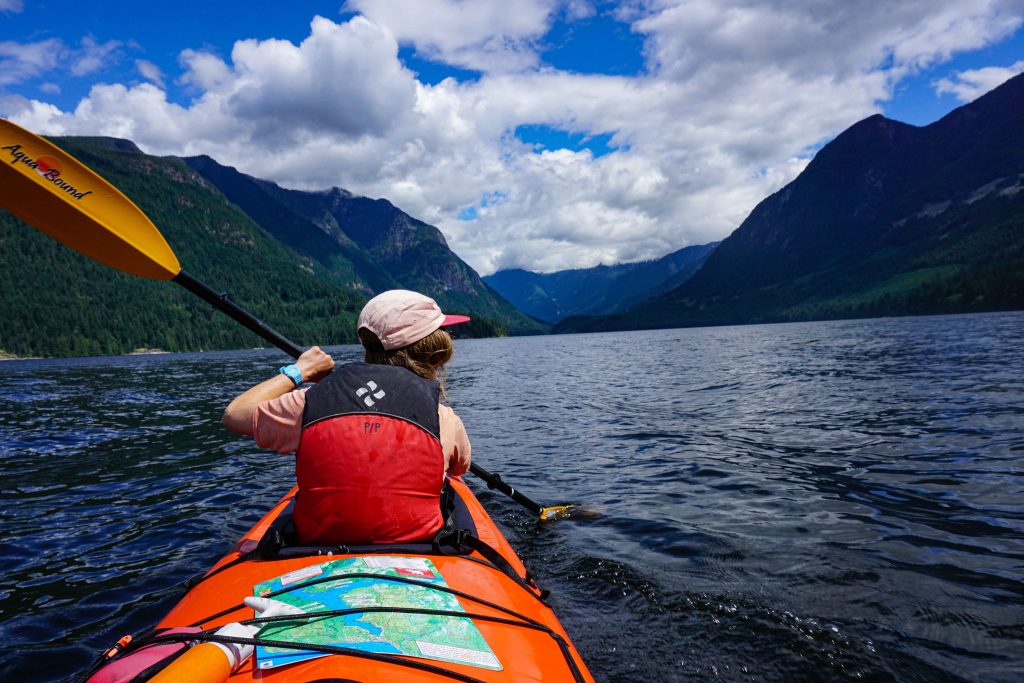
Tip #11: Adjust your position
Sea kayaks typically have foot pegs attached to adjustable straps. When you sit in the kayak, play around with the straps until your legs are stretched out but with a slight bend in them (like a frog). This allows you to brace your legs against the sides, putting you in a better paddling position. You can also adjust the paddle and the drip ring to your liking.
Tip #12: Be ready for weather exposure
When you’re out on the water, you’re fully exposed to the elements. Sun, rain, wind, saltwater: it’ll get you. Be prepared for this by applying lots of sunscreen and wearing a brimmed hat. Wind breakers, waterproof jackets and special kayaking gloves are also useful pieces of equipment.
Tip #13: Consider using a spray skirt
A spray skirt is something you wear around your waist. When you sit in the kayak, you then wrap it around the edges of the cockpit, sealing you in. Spray skirts are not 100% waterproof – a big wave will cause water to soak through. But they do a great job of keeping spray off the lower half of your body, which in turn can help to keep you warm and relatively dry.
If you use a spray skirt, make sure you know how to remove it, in the event of a capsize. Always keep the handle of the skirt exposed (and in front of you) for easy access.
Tip #14: Stay close to shore
Paddling close to shore is almost always the safest option when sea kayaking. The currents are not as strong and you’re often better protected from the wind. Just don’t get so close that you scrape the bottom of the kayak or chip the paddle on rocks.
Tip #15: Store your kayak safely
Once you reach your destination, be sure to carry your kayak above the tideline. Otherwise, it will float away in the night, leaving you stranded. If possible, cover the cockpits with the spray skirts and turn the kayak upside down.
Tip #16: And finally…
Those in a single kayak (or in the back of a two/three person kayak) will have foot pedals to steer the rudder. Don’t forget to pull the rudder up when you’re approaching shallow water! And if there’s more than one person in the kayak, try to paddle in unison.

